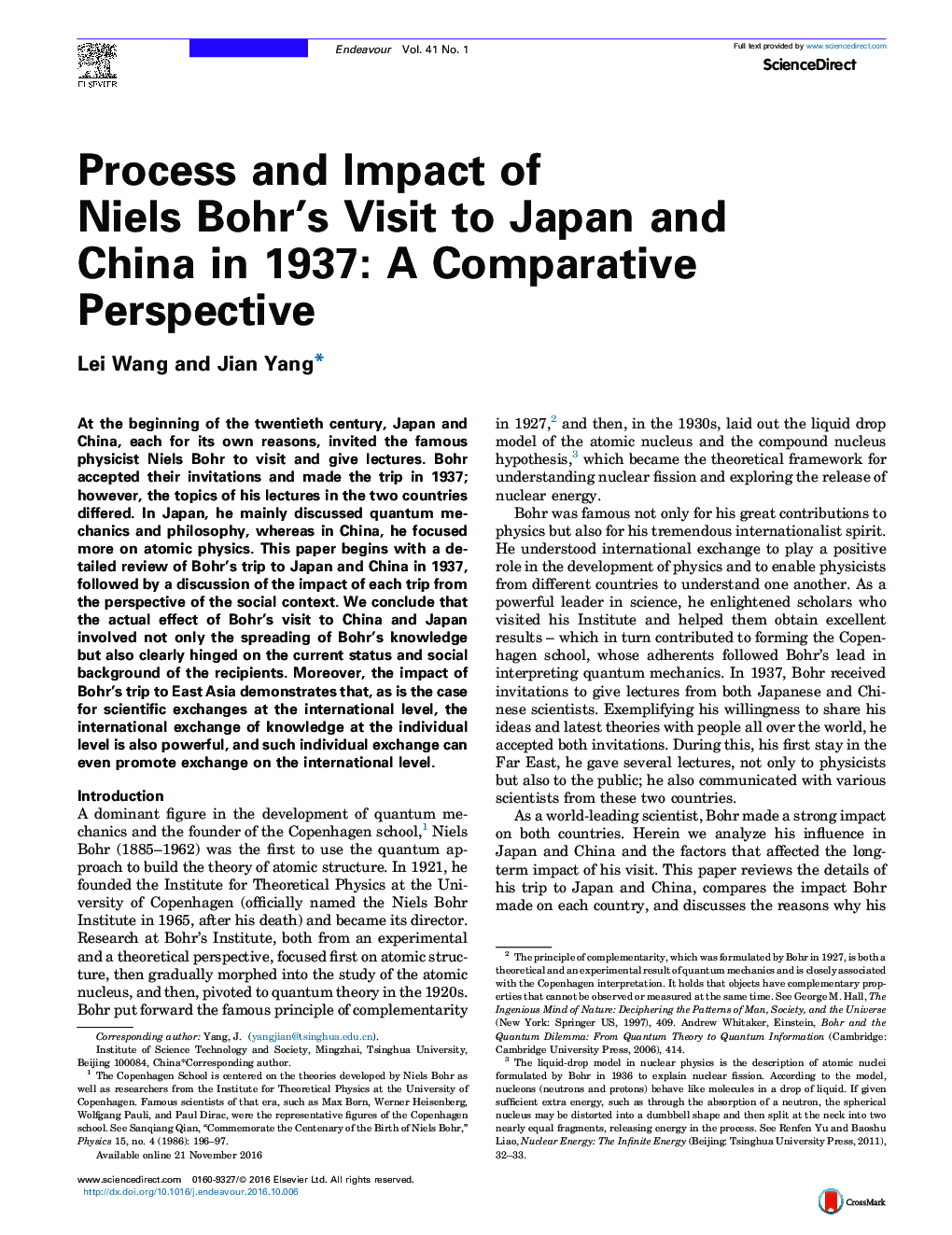| Article ID | Journal | Published Year | Pages | File Type |
|---|---|---|---|---|
| 5130243 | Endeavour | 2017 | 11 Pages |
â¢The effect of Bohr's visit clearly hinged on the social context of the recipients.â¢Transplanting traditions from abroad and making them local is an efficient way.â¢The international exchange on the individual level can be very powerful.
At the beginning of the twentieth century, Japan and China, each for its own reasons, invited the famous physicist Niels Bohr to visit and give lectures. Bohr accepted their invitations and made the trip in 1937; however, the topics of his lectures in the two countries differed. In Japan, he mainly discussed quantum mechanics and philosophy, whereas in China, he focused more on atomic physics. This paper begins with a detailed review of Bohr's trip to Japan and China in 1937, followed by a discussion of the impact of each trip from the perspective of the social context. We conclude that the actual effect of Bohr's visit to China and Japan involved not only the spreading of Bohr's knowledge but also clearly hinged on the current status and social background of the recipients. Moreover, the impact of Bohr's trip to East Asia demonstrates that, as is the case for scientific exchanges at the international level, the international exchange of knowledge at the individual level is also powerful, and such individual exchange can even promote exchange on the international level.
